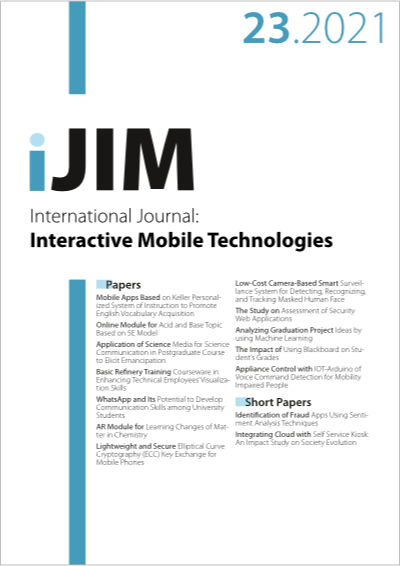AR Module for Learning Changes of Matter in Chemistry
DOI:
https://doi.org/10.3991/ijim.v15i23.27343Keywords:
AR Module, Project-Based Learning, Augmented reality, Phase Change, STEMAbstract
Internal Visualization challenges concerning sub-microscopic particles in chemistry often result in some difficulties in learning the change of state of matter. Therefore, this study aims at developing an augmented reality ProCAR module that utilizes a project-based learning approach to facilitate learning changes of matter. This study employs ADDIE (Analysis, Design, Development, Implementation and Evaluation) instructional design model. The quality of the module was evaluated by a group of 5 Chemistry teacher-educator experts of Universiti Teknologi Malaysia to identify the suitability of the module. Inter-rater reliability (IRR) percentages were determined and the feedback was analyzed based on thematic analysis. The result shows that 100% of its learning objectives, Content, Usability, and Assessment and 75% of its performances were good and reliable all having IRR value 75% and above. Such revealed that AR Module is potentially effective for the teaching phase change to Secondary school students. Recommendations for future studies were highlighted
Downloads
Published
2021-12-08
How to Cite
Solomon Mahanan, M., Ibrahim, N. H., Surif, J., & Ken Nee, C. (2021). AR Module for Learning Changes of Matter in Chemistry. International Journal of Interactive Mobile Technologies (iJIM), 15(23), pp. 72–88. https://doi.org/10.3991/ijim.v15i23.27343
Issue
Section
Papers
License
Copyright (c) 2021 Mangai Solomon Mahanan, Nor Hasniza Ibrahim, Johari Surif, Chee Ken Nee

This work is licensed under a Creative Commons Attribution 4.0 International License.



